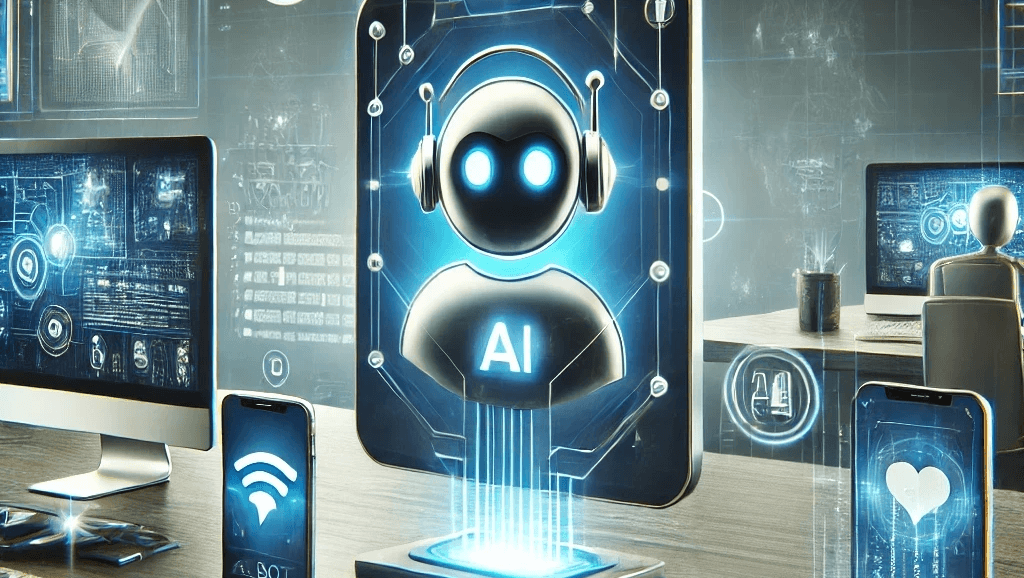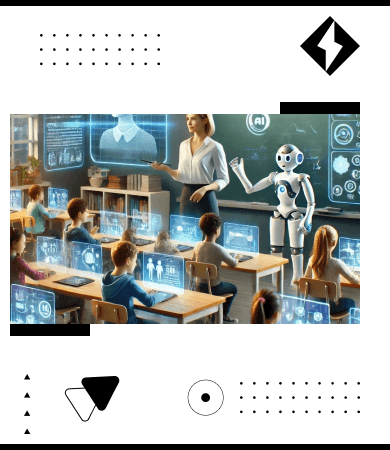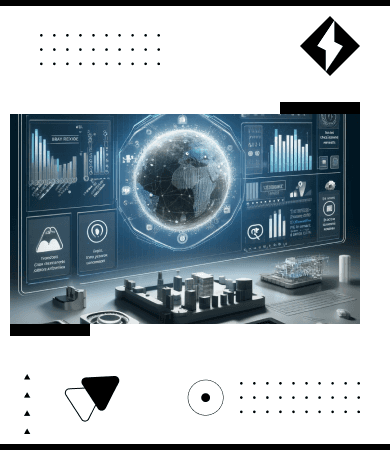Support center +91 97257 89197
Generative AI developmentSeptember 3, 2024
AI-Powered Chatbots: Enhancing Customer Engagement and Retention

Introduction: The Rise of AI-Powered Chatbots
In today’s fast-paced digital world, customer expectations are higher than ever. People expect instant responses, personalized interactions, and seamless experiences across all channels. To meet these growing demands, businesses have turned to AI-powered chatbots as a solution for enhancing customer engagement and retention.
AI-powered chatbots have evolved from basic automated responders into sophisticated virtual assistants capable of holding meaningful conversations, resolving complex issues, and learning from interactions. With advancements in AI, particularly in Natural Language Processing (NLP) and machine learning, these chatbots are helping businesses create more dynamic, personalized, and proactive customer experiences.
In this blog, we’ll explore how AI chatbots are transforming customer engagement, driving retention, and what the future holds for this innovative technology.
Understanding AI-Powered Chatbots
What Are AI-Powered Chatbots?
AI-powered chatbots are digital tools that use artificial intelligence, specifically machine learning algorithms and NLP, to interact with users through natural conversations. Unlike rule-based bots, which follow pre-programmed responses, AI chatbots are dynamic and can understand context, learn from user interactions, and deliver personalized solutions. These bots go beyond simple Q&A, offering real-time support and meaningful engagement based on individual user preferences and behavior.
Types of AI Chatbots
- Rule-Based Chatbots: These chatbots follow predefined rules and workflows to respond to customer inquiries. They’re limited to basic scenarios and don’t learn from user interactions.
- AI-Powered Chatbots: Leveraging machine learning and NLP, these chatbots understand intent, context, and user sentiment. They can handle complex queries, provide personalized responses, and even engage in multiple conversations at once.
AI chatbots are often embedded within customer-facing platforms such as websites, mobile apps, and social media, offering businesses an always-available solution for customer service, sales, and even marketing.
Key Benefits of AI Chatbots for Customer Engagement
24/7 Availability
One of the most immediate and impactful benefits of AI-powered chatbots is their ability to provide 24/7 customer support. Traditional customer service models rely on human agents who are limited by time zones and availability. With AI chatbots, customers can access assistance at any time of day, whether it’s a simple query or a complex troubleshooting issue.
By eliminating long wait times, businesses can ensure that customers receive help the moment they need it, leading to higher satisfaction levels and improved brand perception.
Personalization at Scale
Personalized customer interactions are key to building strong relationships, and AI chatbots make it possible to deliver this at scale. Through machine learning, chatbots can analyze customer data—such as browsing history, previous interactions, and purchase behavior—to tailor responses to individual users.
For example, an AI chatbot for an e-commerce platform might recognize a returning customer and suggest products based on their previous purchases. This level of personalization not only makes the interaction more relevant but also helps foster a sense of connection between the customer and the brand.
Real-Time Responses
Today’s customers don’t want to wait for answers. AI chatbots provide instant, real-time responses to customer inquiries, enhancing the overall user experience. This is particularly valuable in scenarios where time is critical, such as resolving technical issues, providing shipping updates, or answering product questions.
AI chatbots can handle multiple conversations simultaneously, unlike human agents, who can be easily overwhelmed during high traffic periods. This ensures that every customer receives immediate attention, improving satisfaction and reducing frustration.
Enhanced User Experience
AI chatbots are designed to create seamless and efficient user experiences. By integrating with various digital platforms (like websites, mobile apps, and social media), they offer a single point of contact where customers can get support, ask questions, or complete transactions without leaving the platform. This reduces friction in the customer journey and makes it easier for users to interact with the business on their terms.
Furthermore, advanced chatbots can offer proactive solutions, such as alerting users about upcoming events, reminding them of abandoned shopping carts, or suggesting helpful articles, further enhancing the user experience.
AI Chatbots and Customer Retention Strategies
While improving engagement is a primary function of AI-powered chatbots, they also play a pivotal role in retaining customers. By ensuring a consistent, personalized, and proactive approach to customer service, chatbots help build lasting relationships. Here are key ways in which AI chatbots can drive customer retention:
Proactive Engagement
One of the most powerful aspects of AI chatbots is their ability to engage customers proactively. Rather than waiting for users to reach out with a problem, AI-powered chatbots can anticipate customer needs based on previous interactions or real-time data. For instance, if a customer has been browsing a website without making a purchase, the chatbot can step in to offer assistance, suggest related products, or provide a discount code to close the sale.
Proactive engagement also extends to post-purchase interactions. AI chatbots can remind customers about upcoming subscription renewals, provide personalized product recommendations, or even ask for feedback, keeping customers engaged long after their initial interaction.
Data-Driven Insights
AI chatbots are excellent at gathering and analyzing data from customer interactions. This data provides valuable insights into customer preferences, pain points, and behavior patterns. By analyzing this information, businesses can tailor their offerings and services to meet the unique needs of their customers, making them feel valued and understood.
For example, AI-powered chatbots can analyze conversation data to identify frequent customer complaints or issues, allowing businesses to address these problems proactively. This type of data-driven approach helps businesses not only improve customer satisfaction but also retain customers by continually meeting their evolving needs.
Building Loyalty
Customer loyalty is a key factor in retention, and AI chatbots can help businesses foster this loyalty by providing personalized offers, rewards, and consistent follow-ups. For example, a chatbot can recognize when a customer is eligible for a loyalty reward and notify them of a special discount or promotion.
Additionally, chatbots can be integrated into customer loyalty programs to keep customers engaged with timely reminders, updates on points or rewards status, and exclusive offers. This level of personalization and attention helps create a sense of belonging and appreciation, which encourages repeat business and long-term customer relationships.
Handling Complex Issues
While AI chatbots are effective in addressing routine questions, they can also escalate more complex issues to human agents, ensuring customers always receive the best possible support. This collaboration between AI and human agents enhances the overall customer experience. The chatbot gathers initial information and provides context, allowing the human agent to step in with full knowledge of the situation, which leads to quicker and more effective resolutions.
This seamless transition from AI to human agents reduces frustration and makes customers feel that their concerns are being taken seriously, contributing to higher levels of satisfaction and loyalty.
5.
AI Chatbots and Customer Retention Strategies
While improving engagement is a primary function of AI-powered chatbots, they also play a pivotal role in retaining customers. By ensuring a consistent, personalized, and proactive approach to customer service, chatbots help build lasting relationships. Here are key ways in which AI chatbots can drive customer retention:
Proactive Engagement
One of the most powerful aspects of AI chatbots is their ability to engage customers proactively. Rather than waiting for users to reach out with a problem, AI-powered chatbots can anticipate customer needs based on previous interactions or real-time data. For instance, if a customer has been browsing a website without making a purchase, the chatbot can step in to offer assistance, suggest related products, or provide a discount code to close the sale.
Proactive engagement also extends to post-purchase interactions. AI chatbots can remind customers about upcoming subscription renewals, provide personalized product recommendations, or even ask for feedback, keeping customers engaged long after their initial interaction.
Data-Driven Insights
AI chatbots are excellent at gathering and analyzing data from customer interactions. This data provides valuable insights into customer preferences, pain points, and behavior patterns. By analyzing this information, businesses can tailor their offerings and services to meet the unique needs of their customers, making them feel valued and understood.
For example, AI-powered chatbots can analyze conversation data to identify frequent customer complaints or issues, allowing businesses to address these problems proactively. This type of data-driven approach helps businesses not only improve customer satisfaction but also retain customers by continually meeting their evolving needs.
Building Loyalty
Customer loyalty is a key factor in retention, and AI chatbots can help businesses foster this loyalty by providing personalized offers, rewards, and consistent follow-ups. For example, a chatbot can recognize when a customer is eligible for a loyalty reward and notify them of a special discount or promotion.
Additionally, chatbots can be integrated into customer loyalty programs to keep customers engaged with timely reminders, updates on points or rewards status, and exclusive offers. This level of personalization and attention helps create a sense of belonging and appreciation, which encourages repeat business and long-term customer relationships.
Handling Complex Issues
While AI chatbots are effective in addressing routine questions, they can also escalate more complex issues to human agents, ensuring customers always receive the best possible support. This collaboration between AI and human agents enhances the overall customer experience. The chatbot gathers initial information and provides context, allowing the human agent to step in with full knowledge of the situation, which leads to quicker and more effective resolutions.
This seamless transition from AI to human agents reduces frustration and makes customers feel that their concerns are being taken seriously, contributing to higher levels of satisfaction and loyalty.
How to Integrate AI-Powered Chatbots in Your Business
Integrating AI-powered chatbots into your business isn’t just about choosing the right platform—it’s about ensuring the chatbot works harmoniously with your existing systems to create a seamless experience for your customers. Here’s how to get started:
Choosing the Right Chatbot Platform
There are numerous AI chatbot platforms available, each with different capabilities and integrations. When selecting a platform, consider the following factors:
- Customization Options: Does the platform allow you to customize chatbot interactions based on your specific needs?
- Integration Capabilities: Can the chatbot integrate with your CRM, helpdesk, or e-commerce platform?
- Scalability: Can the platform handle increasing volumes of customer interactions as your business grows?
- AI and NLP Capabilities: How advanced are the platform’s machine learning and natural language processing features?
Some popular AI chatbot platforms include Dialogflow, Microsoft Bot Framework, and IBM Watson Assistant.
Integrating Chatbots Into Existing Systems
To get the most out of your AI chatbot, it should be fully integrated into your customer support and communication infrastructure. This allows it to access customer data, historical interactions, and any other information needed to provide personalized responses. Key integration points include:
- CRM Systems: So the chatbot can pull customer data and previous interaction history
- E-commerce Platforms: To help with order tracking, inventory checks, and product recommendations
- Social Media: Enabling customer support via platforms like Facebook Messenger or Instagram
- Email Support: Allowing chatbots to handle common email inquiries automatically
Measuring Success: Key Performance Indicators (KPIs)
Once your chatbot is up and running, it’s essential to measure its performance to ensure it’s meeting your customer engagement and retention goals. Some key KPIs to track include:
- Response Time: How quickly the chatbot responds to customer inquiries
- Resolution Rate: The percentage of queries the chatbot resolves without human intervention
- Customer Satisfaction (CSAT): How satisfied customers are with their chatbot interactions
- Retention Rate: Measuring whether the chatbot interactions lead to repeat business or reduced churn
Tracking these KPIs helps you fine-tune your chatbot over time, ensuring it continues to deliver value to your customers and business.
Future of AI-Powered Chatbots: Trends to Watch
AI-powered chatbots are continuously evolving, and businesses that stay ahead of the trends can leverage new opportunities to enhance customer experiences even further. Here are some trends to keep an eye on:
Conversational AI and Voice Assistants
With the rise of voice-activated technology, chatbots are moving beyond text-based interactions. Voice-enabled AI chatbots, such as those integrated with voice assistants like Alexa or Google Assistant, are becoming more common. These voice-driven interactions make it even easier for customers to engage with businesses hands-free, whether they’re driving, cooking, or multitasking.
Emotional Intelligence and Empathy in AI
While chatbots are currently adept at handling factual queries, the future of AI lies in emotional intelligence. Developers are working on chatbots that can understand and respond to customer emotions using sentiment analysis. Imagine a chatbot that can detect frustration in a customer’s tone and adjust its responses accordingly, offering more empathetic support.
Integration with IoT
The Internet of Things (IoT) is another area where AI chatbots will play a significant role. Imagine a future where your smart fridge notifies a chatbot when you’re running low on milk, and the chatbot automatically places an order for you. The integration of chatbots with IoT devices opens up a world of possibilities for automation and convenience.
Blockchain and Secure Transactions
As privacy concerns grow, AI chatbots may integrate with blockchain technology to offer more secure, transparent transactions. This will be particularly useful in industries like finance and healthcare, where data security is paramount.
Conclusion
AI-powered chatbots are no longer just a novelty; they’ve become essential tools for enhancing customer engagement and retention. By providing personalized, proactive, and real-time support, chatbots allow businesses to offer seamless customer experiences while reducing costs and improving efficiency. Whether through proactive engagement, data-driven insights, or the ability to scale personalized interactions, AI chatbots are reshaping the way businesses interact with their customers.
As AI technology continues to evolve, chatbots will only become more intelligent, empathetic, and integrated into our daily lives. Now is the time for businesses to adopt AI-powered chatbots and stay ahead of the curve in delivering exceptional customer experiences.
How to Integrate AI-Powered Chatbots in Your Business
Integrating AI-powered chatbots into your business isn’t just about choosing the right platform—it’s about ensuring the chatbot works harmoniously with your existing systems to create a seamless experience for your customers. Here’s how to get started:
Choosing the Right Chatbot Platform
There are numerous AI chatbot platforms available, each with different capabilities and integrations. When selecting a platform, consider the following factors:
- Customization Options: Does the platform allow you to customize chatbot interactions based on your specific needs?
- Integration Capabilities: Can the chatbot integrate with your CRM, helpdesk, or e-commerce platform?
- Scalability: Can the platform handle increasing volumes of customer interactions as your business grows?
- AI and NLP Capabilities: How advanced are the platform’s machine learning and natural language processing features?
Some popular AI chatbot platforms include Dialogflow, Microsoft Bot Framework, and IBM Watson Assistant.
Integrating Chatbots Into Existing Systems
To get the most out of your AI chatbot, it should be fully integrated into your customer support and communication infrastructure. This allows it to access customer data, historical interactions, and any other information needed to provide personalized responses. Key integration points include:
- CRM Systems: So the chatbot can pull customer data and previous interaction history
- E-commerce Platforms: To help with order tracking, inventory checks, and product recommendations
- Social Media: Enabling customer support via platforms like Facebook Messenger or Instagram
- Email Support: Allowing chatbots to handle common email inquiries automatically
Measuring Success: Key Performance Indicators (KPIs)
Once your chatbot is up and running, it’s essential to measure its performance to ensure it’s meeting your customer engagement and retention goals. Some key KPIs to track include:
- Response Time: How quickly the chatbot responds to customer inquiries
- Resolution Rate: The percentage of queries the chatbot resolves without human intervention
- Customer Satisfaction (CSAT): How satisfied customers are with their chatbot interactions
- Retention Rate: Measuring whether the chatbot interactions lead to repeat business or reduced churn
Tracking these KPIs helps you fine-tune your chatbot over time, ensuring it continues to deliver value to your customers and business.
Future of AI-Powered Chatbots: Trends to Watch
AI-powered chatbots are continuously evolving, and businesses that stay ahead of the trends can leverage new opportunities to enhance customer experiences even further. Here are some trends to keep an eye on:
Conversational AI and Voice Assistants
With the rise of voice-activated technology, chatbots are moving beyond text-based interactions. Voice-enabled AI chatbots, such as those integrated with voice assistants like Alexa or Google Assistant, are becoming more common. These voice-driven interactions make it even easier for customers to engage with businesses hands-free, whether they’re driving, cooking, or multitasking.
Emotional Intelligence and Empathy in AI
While chatbots are currently adept at handling factual queries, the future of AI lies in emotional intelligence. Developers are working on chatbots that can understand and respond to customer emotions using sentiment analysis. Imagine a chatbot that can detect frustration in a customer’s tone and adjust its responses accordingly, offering more empathetic support.
Integration with IoT
The Internet of Things (IoT) is another area where AI chatbots will play a significant role. Imagine a future where your smart fridge notifies a chatbot when you’re running low on milk, and the chatbot automatically places an order for you. The integration of chatbots with IoT devices opens up a world of possibilities for automation and convenience.
Blockchain and Secure Transactions
As privacy concerns grow, AI chatbots may integrate with blockchain technology to offer more secure, transparent transactions. This will be particularly useful in industries like finance and healthcare, where data security is paramount.
Conclusion
AI-powered chatbots are no longer just a novelty; they’ve become essential tools for enhancing customer engagement and retention. By providing personalized, proactive, and real-time support, chatbots allow businesses to offer seamless customer experiences while reducing costs and improving efficiency. Whether through proactive engagement, data-driven insights, or the ability to scale personalized interactions, AI chatbots are reshaping the way businesses interact with their customers.
As AI technology continues to evolve, chatbots will only become more intelligent, empathetic, and integrated into our daily lives. Now is the time for businesses to adopt AI-powered chatbots and stay ahead of the curve in delivering exceptional customer experiences.
TLDR
AI-powered chatbots are transforming customer engagement by offering real-time responses, personalized interactions, and 24/7 support. By analyzing customer behavior and providing tailored experiences, these chatbots not only enhance engagement but also improve retention. Businesses can integrate AI chatbots to offer proactive solutions, streamline operations, and build stronger customer loyalty.
FAQs
An AI-powered chatbot uses artificial intelligence, specifically machine learning and natural language processing, to interact with users in a conversational manner. These chatbots can understand and respond to customer queries, provide real-time support, and deliver personalized experiences based on user data.
AI chatbots improve customer engagement by offering personalized, immediate responses to customer queries. They provide a seamless experience, operate 24/7, and can adapt their responses based on individual user preferences and behaviors, making interactions more relevant and engaging.
Yes, AI chatbots can help with customer retention by providing proactive support, personalized recommendations, and timely follow-ups. By offering relevant and timely interactions, chatbots help keep customers satisfied and loyal to the brand.
Key technologies behind AI chatbots include Natural Language Processing (NLP) for understanding and generating human-like text, machine learning algorithms for learning from user interactions, and sentiment analysis for gauging customer emotions and adjusting responses accordingly.
Businesses can measure the success of AI chatbots using key performance indicators (KPIs) such as customer satisfaction scores, average response time, resolution rate, and customer retention metrics. These KPIs help assess the chatbot's effectiveness in engaging and retaining customers.
Work with us







